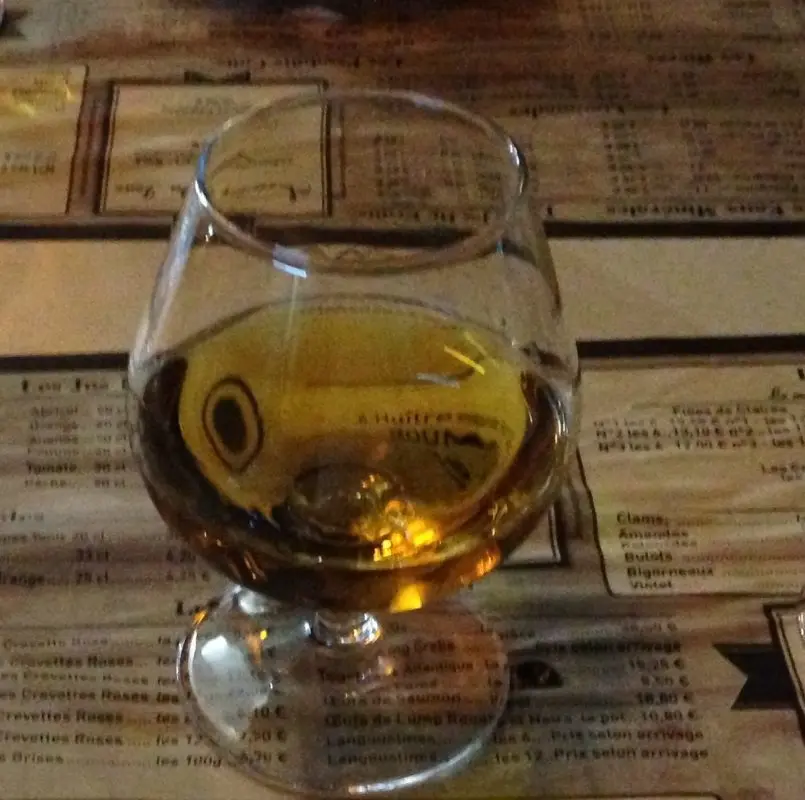Contents
Cognac occupies a leading place among alcoholic beverages in terms of the richness of the aromatic bouquet. Premium drinks are distinguished by a multifaceted aroma with fruity, floral, woody and spicy tones, which are given to cognac spirits by long aging in oak barrels. Next, we will figure out what the smell of cognac depends on and how to determine the quality of a noble drink by aroma.
How is the aroma of cognac formed?
The quality of cognac is laid at the stage of growing vines and harvesting. The best spirits are obtained from grapes with high acidity, from which wine with a strength of no more than 9% comes out. Harvested when the berries are not yet overripe, as the higher alcohol content complicates the work of the distiller. In the process of fermentation, the must acquires pronounced fruity aromas, characteristic of young cognacs.
Distillation is a complex process. The smell of cognac is laid at this stage – the master regulates the distillation process depending on the desired result and at the output can get both spirits with fresh grape notes and stronger distillates, where part of the bouquet is lost due to more intense heating.
Aging is of decisive importance in the formation of the cognac aroma. Alcohols with an age of less than 15 years are considered relatively young and are dominated by floral and fruity notes. With longer exposure times, further evaporation of water occurs, the concentration of alcohol molecules increases and new flavors begin to form in the drink.
Speaking about the maturation of cognac spirits, winemakers often use the term Rancio, which characterizes the changes in cognac during the aging process. The initial stage occurs after 10-15 years, when the distillate is characterized by floral, fruity, nutty and spicy shades.

After 20-30 years of maturation, earthy, mushroom, ginger tones appear in spirits, and longer exposure brings nuances of tobacco, cedar, port wine and nutmeg into cognac.
The final stage of Rancio is typical for spirits of half a century of age, acquiring a complex aroma with notes of overripe tropical fruits, sandalwood and leather.
The smell of poor quality cognac
A complex aroma is inherent in premium-class drinks made using classical technology. In mass production, tank aging is often used, which reduces the maturation time of alcohols and prevents evaporation losses. The technology is that the distillate is poured into tanks with treated oak staves and maturation is accelerated by heating or UV treatment. Experts do not take this drink seriously, but in stores it is sold under the guise of cognac.
The quality of a product can only be determined by tasting. The drink is poured into a glass, filling it by about a third. Evaluation of the fragrance palette is carried out in several stages:
- the first wave is felt at a distance of 5-10 centimeters from the edge of the glass, here vanilla comes to the fore;
- the second wave is evaluated close to the glass, so you can feel the fruit and flower shades;
- thanks to the third wave, you can feel the woody and spicy nuances that aging gives spirits. At this stage, the glass is held at some distance from the nose in order to evaluate the drink in the complex.
The aroma of a good cognac changes and is fully revealed only after the drink has stood in the glass for 10-15 minutes. The smell of a poor quality product remains unchanged, it has harsh alcohol or chemical shades that come from non-grape distillates and synthetic flavors. Such drinks will not bring harm to health, but they will not bring any pleasure either.
Why cognac smells like bedbugs
It is generally accepted that the aroma of cognac resembles the smell of bed parasites. The analogy has firmly entered into jokes and sayings, although today it is not entirely correct to compare a noble drink with insects.

Bedbugs secrete a secret that contains aldehydes, alkanes and cimicic acid. Chemical elements are mixed with oxygen and give a strong enough smell, which really resembled Soviet cognac of not very high quality.
Currently, the vast majority of varieties of a noble drink have nothing to do with bedbugs. Some similarity of smells is observed when the distillate is aged in barrels made of poorly processed wood, which releases an excessive amount of tannins. However, these shades disappear when the cognac is poured into glasses, and the bouquet opens up.









